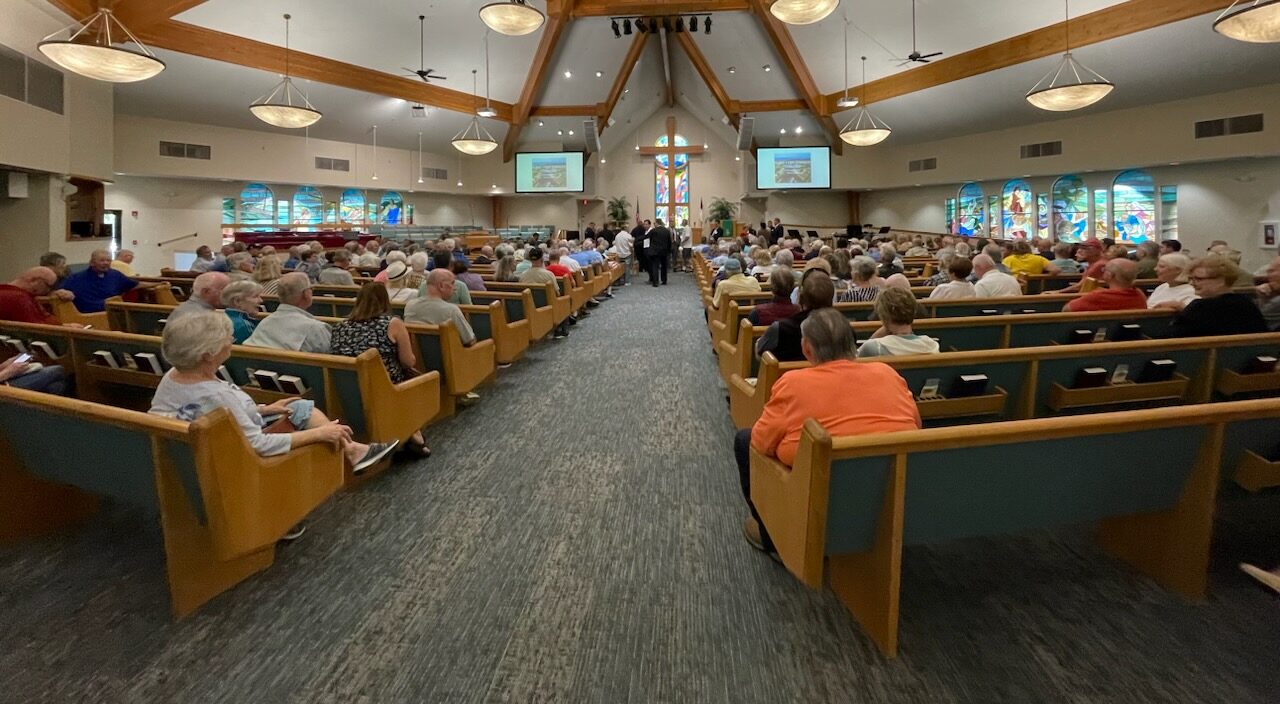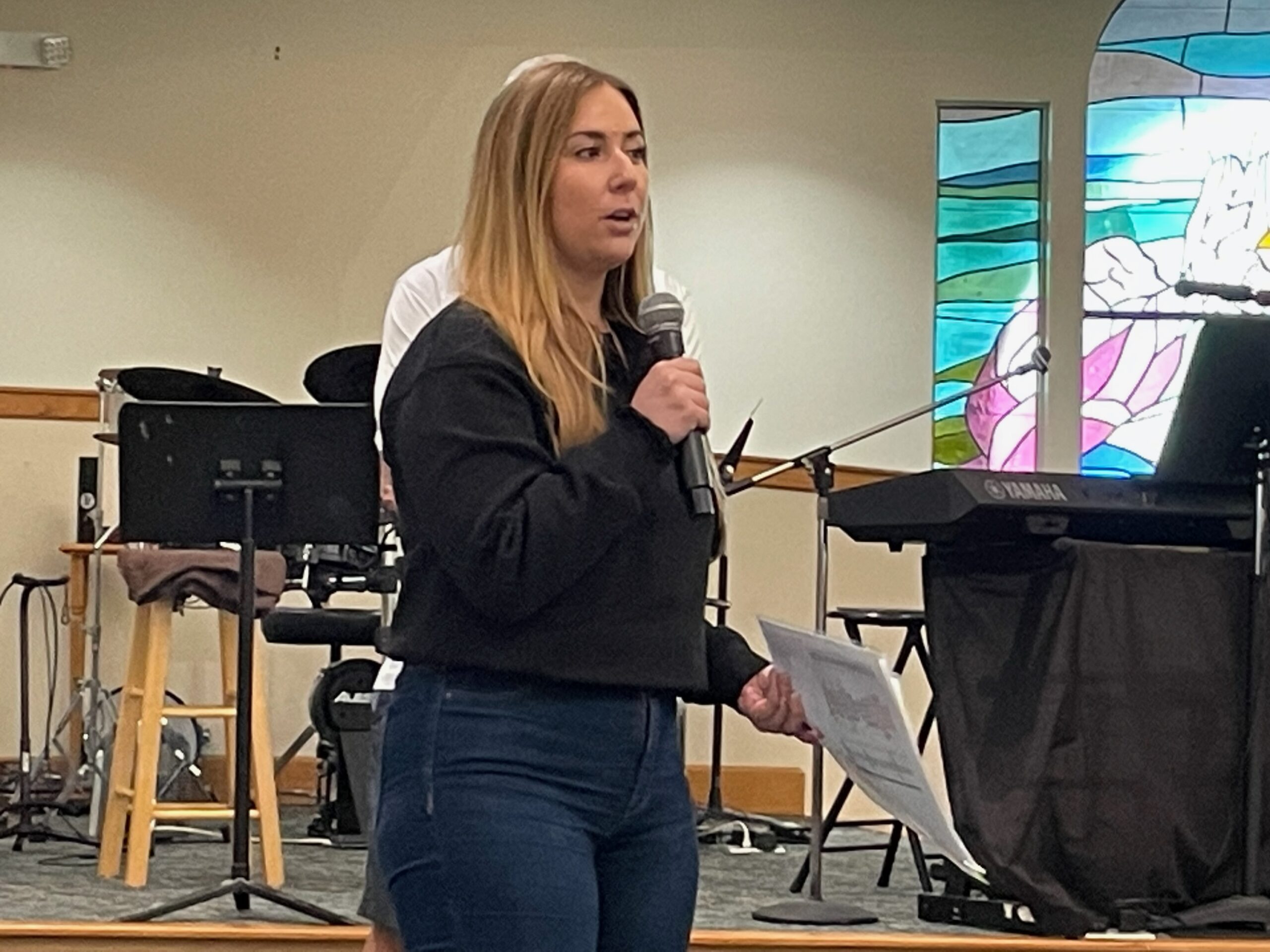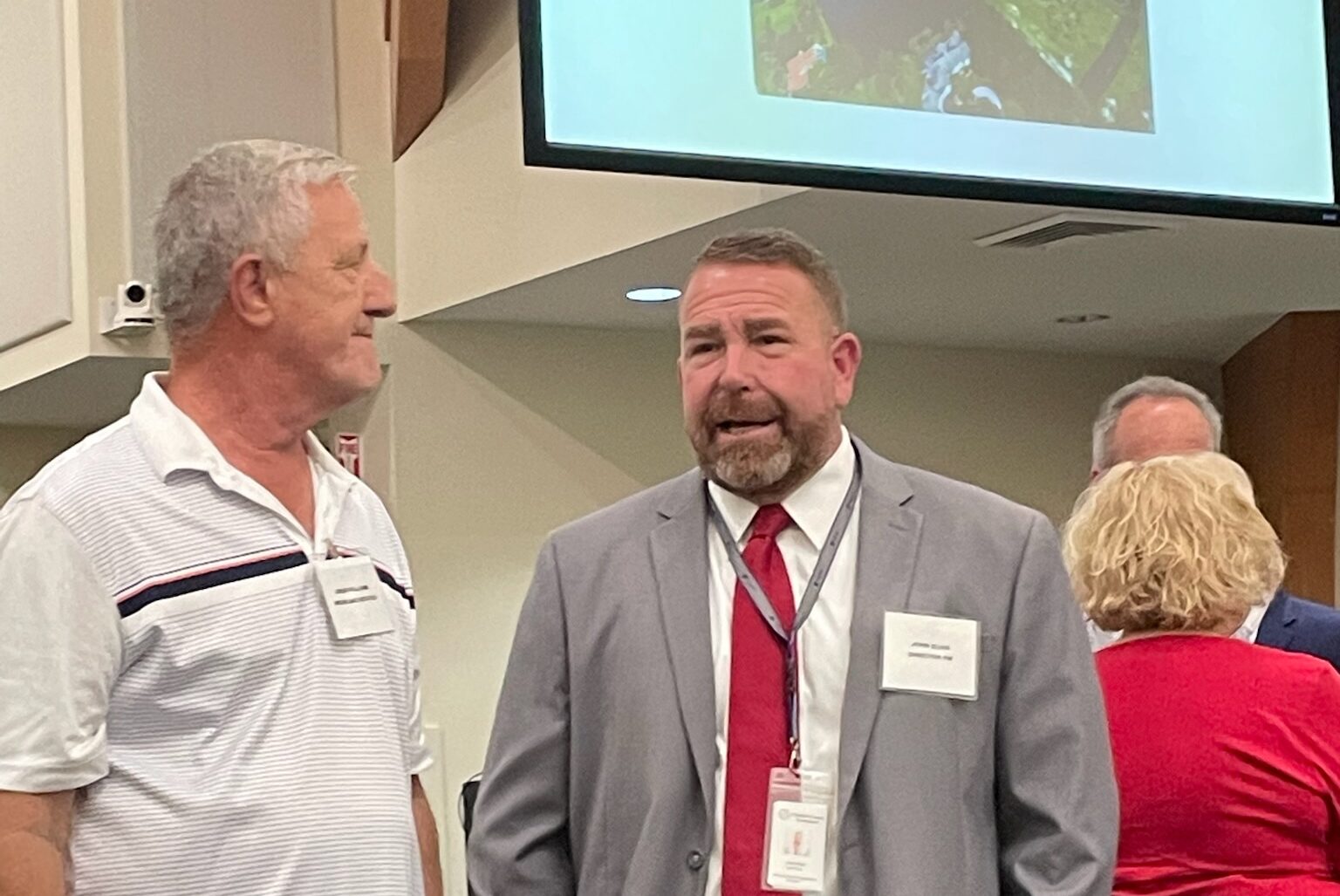Residents from 12 communities along Burnt Store Road expressed concerns with county officials about increasing development and its related problems along the rural roadway during a Feb. 8 meeting at Burnt Store Presbyterian Church.
Burnt Store Corridor Coalition organizer John Fleming and coalition spokesperson Mary Ellen Kiss served as moderators of the event. Burnt Store Corridor Coalition has more than 11,000 members who live along Burnt Store Road, which extends from U.S. 41 in Charlotte County to Pine Island Road in Lee County.
Fleming asked officials from both counties to address several issues, including a request for a new comprehensive plan for the corridor to replace the 2005 plan, a hydrology study to address flooding concerns, the widening of Burnt Store Road, wildlife protection and neighborhood commercial development.
 “I’m not interested in giving any more developers rights unless I’m given the big picture,” Charlotte County Commissioner Chris Constance said after listening to residents’ concerns.
“I’m not interested in giving any more developers rights unless I’m given the big picture,” Charlotte County Commissioner Chris Constance said after listening to residents’ concerns.
He also said the cost of providing more water to the new residents should not be borne by current stakeholders, some of whom have been paying for their water along with rate hikes for many years.
“We’re all trying to come up with solutions,” said Lee County Commissioner Kevin Ruane, who previously served as mayor of Sanibel for over a decade.
Constance said the issue of creating an updated master plan for the Burnt Store Corridor will be discussed at the Charlotte commissioners’ March 19 meeting. Fleming said he expected there would be a big turnout from the coalition at the meeting.
Various members of the panel explained how they are addressing problems along Burnt Store Road.
Capt. Norman Nahra of the Punta Gorda Police Department and members of the Charlotte County and Lee County sheriff’s offices said they were catching more speeders along the road by beefing up patrol and installing speed detection equipment.
When a member of the public asked why the speed limit couldn’t be reduced, Charlotte County Public Works Director John Elias said it would cause traffic backups. However, a section of the road in Punta Gorda had already been reduced to 35 mph.
Currently, a county study is underway to build an east-west corridor to take traffic volume off Burnt Store Road. Eventually, the road will be widened to six lanes, Elias said.
Burnt Store Road was recently expanded to four lanes for the entire length of the road in Charlotte County.
The lack of commercial development for residents was also brought up. Currently, residents must travel about 8 miles to Lee County or about the same distance to Punta Gorda to shop, as there is no supermarket in between.

While the 2005 comprehensive plan for the Burnt Store Corridor did have provisions for commercial areas, which could house a supermarket and shops for future residents, they have not been developed yet.
That was due to there not being enough rooftops to justify adding strip malls, panel members discussed.
Prior to the 2005 plan, early developers did not create water runoff systems that are currently being put in place now.
Planning and zoning official for Charlotte County Shaun Cullinan explained how developers now are creating stormwater runoff systems which circle around communities and do not go through them. Also, water detention ponds are part of the developments.
In the early days of Charlotte County, developers would simply provide ditches where the water would flow, causing flooding on neighboring properties which is a problem that exists today due to the older developers’ lack of planning decades ago.
He also provided examples of the area’s wildlife corridors and where they connect.
One of the most impassioned topics was the mounting number of roadkill due to increasing traffic and speeders.
Ashley Cook, park manager for Alligator Creek Preserve in Punta Gorda, said the preserve is the third largest in Florida, encompassing 46,000 acres. It is along Burnt Store Road, and that area of the preserve has the highest concentration of roadkill, as animals are struck by vehicles while attempting to return to their habitat.
She said Charlotte Harbor Environmental Center conducted a six-month study and said upward of 25 species were involved, including armadillos, raccoons, anhinga, gophers and other turtles and tortoises, hawks, bobcats, possums, vultures, coyotes, squirrels and even cows.
She said while trying to reach their habitat the animals are killed because the areas are “fragmented by development.”
 Part of what the coalition seeks in the updated master plan is a designated wildlife corridor that connects to other communities, giving wildlife a safe passage, either through greenspace, overpasses or underpasses.
Part of what the coalition seeks in the updated master plan is a designated wildlife corridor that connects to other communities, giving wildlife a safe passage, either through greenspace, overpasses or underpasses.
Meanwhile, new houses are being built. In Burnt Store Lakes alone, an average of 95 new homes are being built each year, Fleming said.
Also attending the two-hour session was Charlotte Commissioner Joe Tiseo, Punta Gorda Mayor Lynne Matthews, Metropolitan Planning Organization heads from both counties—D’Juan Harris (Charlotte) and Don Scott (Lee)—and Charlotte County Planning and Zoning official Shaun Cullinan.





